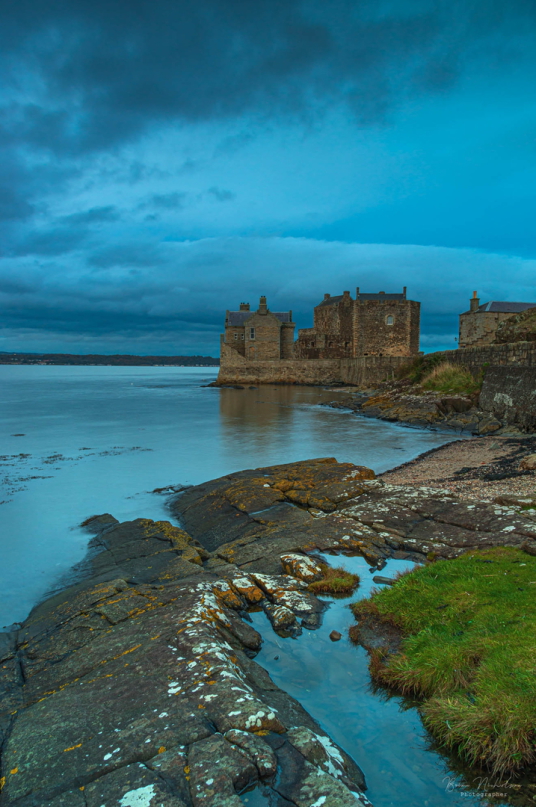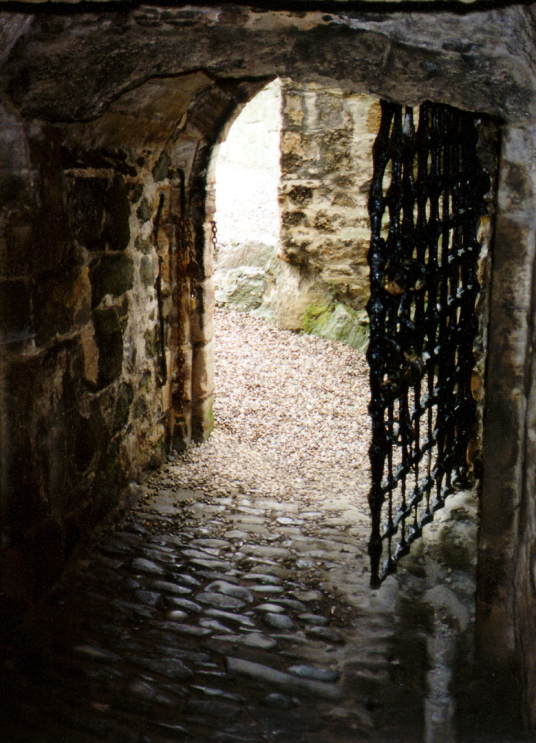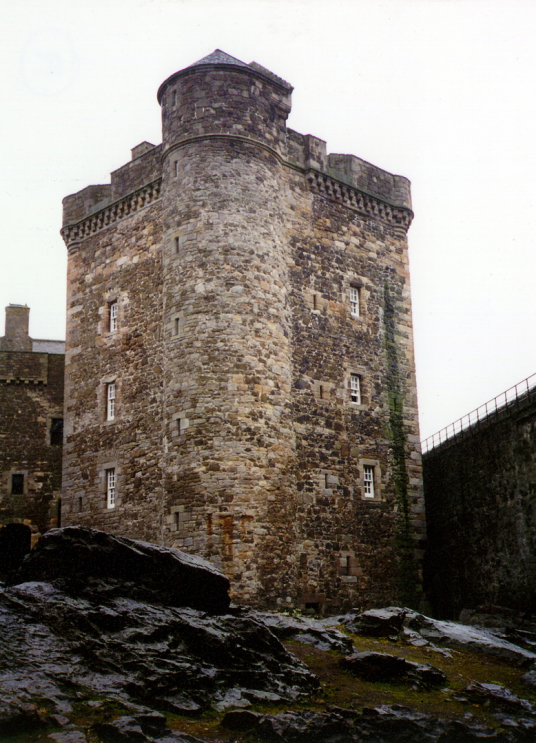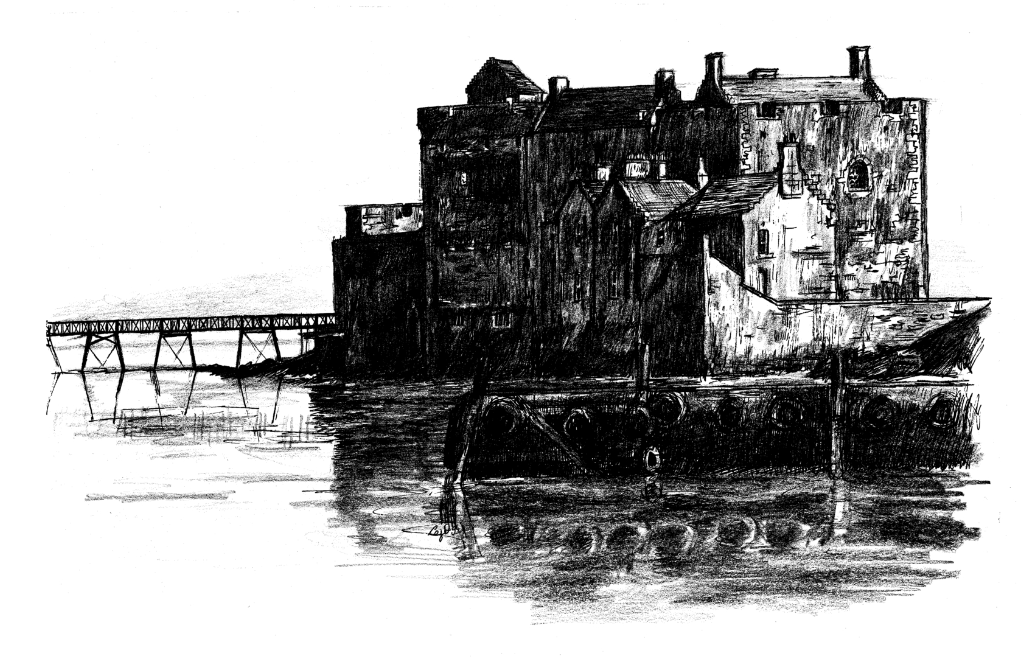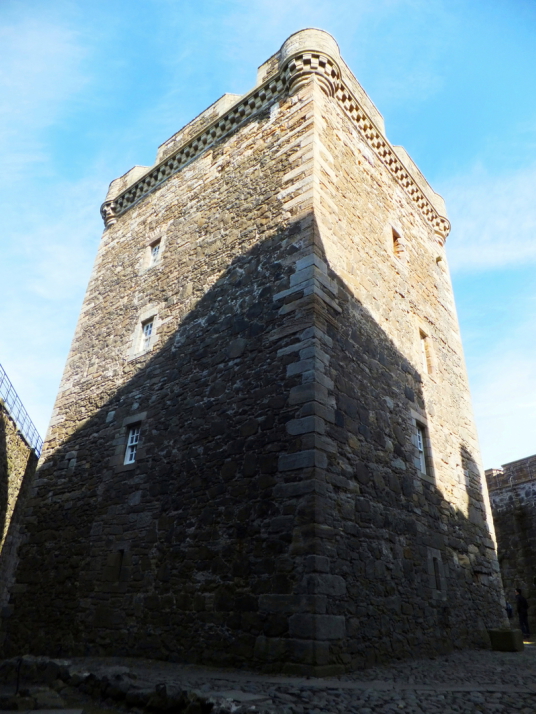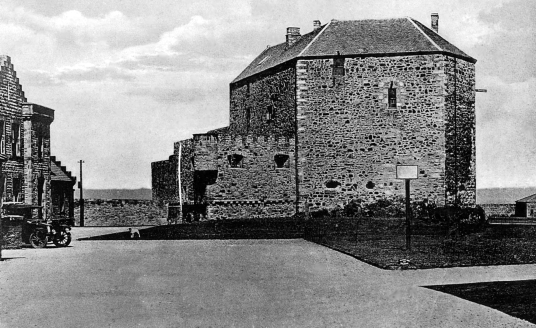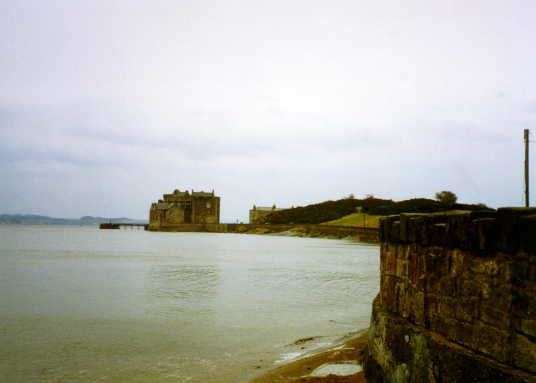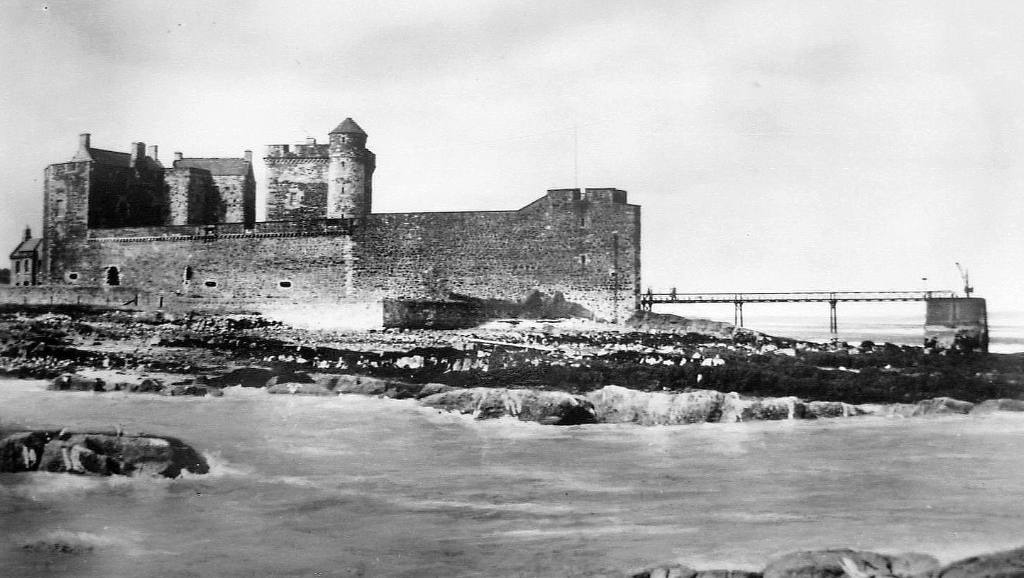–––––– Castle of the Month December 2017 ––––––
Blackness Castle
Blackness Castle, a large, grim and atmospheric old stronghold, held by the Crichtons and once used as a state prison, as an artillery fort, then as an ammunition depot, in an impressive spot by the sea, near Linlithgow in central Scotland.
Falkirk: About 4 miles east of Bo’ness, on the south shore of the Firth of Forth from the B903 or B9109 at the village of Blackness, at Blackness Castle
HES NT 056803 OS: 65 EH49 7NH
OPEN: Open all year: Apr-Sep, daily 9.30-7.30; Nov-Mar, Sat-Wed 10.00-16.00, closed Thu & Fri; closed 25/26 Dec and 1/2 Jan.
Tel: 01506 834807 Web: www.historicenvironment.scot
Colour photos as captioned by © Brian Nicholson (instagram @cyclingbrian68)
Checked 22/3/18
Standing on an outcrop of rock on a promontory in the Firth of Forth, Blackness is a grim and impressive courtyard castle, which was used as the state prison. It was built in the 15th century, but was much modified in later centuries for artillery.
The main entrance has an iron yett of 1693, and is protected by a spur with caponier and gun platforms. It leads into the courtyard, the curtain wall dating partly from the 15th century, although it was massively strengthened for artillery in the 16th and 17th centuries.
The oldest part is the central square 15th-century tower of four storeys, heightened in 1553, and altered again with the addition of a projecting round stair-tower. It was used as a prison for nobles, each chamber having a fireplace and latrine.
The landward tower is probably the site of the 15th-century hall, but the present building, dating mostly from 1540, housed the main residential accommodation for the castle.
The sea tower served as an artillery platform, and as a secondary prison, a hatch giving access to a pit-prison, which was open to the sea at high tide.
There is an old doocot [NT 055801], which formerly had an panel with the date 1591.
‘Blackness Cast’ is marked on Blaeu’s map of The Lothians.
In medieval times, Blackness was an important port for the royal burgh of Linlithgow. The castle is
first mentioned in 1449 as a prison. The Viponts had held the lands since before 1200, but in the 15th century Blackness was acquired by George Crichton, brother of the Chancellor of Scotland. During
the reign of James II in 1444, the Douglases seized and sacked the castle, but it was quickly recovered by the Crichtons. In 1453 Sir George Crichton stopped his son, James, inheriting the property.
James captured Blackness Castle, and imprisoned his father until forced to surrender by the king.
The castle was burned by an English fleet in 1481, and was the meeting place between James III and rebellious nobles in 1488.
From 1537, under Sir James Hamilton of Finnart – builder of Craignethan Castle – work began to turn the castle into an artillery fort, making it one of the most formidable fortresses in Scotland at that time. In 1543 Cardinal David Beaton was imprisoned here, and in 1544 Archibald Douglas, Earl of Angus. When Mary, Queen of Scots, fled to England in 1568 the castle held out for her until 1573. About 1600 the captaincy passed from the Stewarts to the Livingstones.
The castle was captured by General Monck in 1650 during Cromwell’s invasion of Scotland, being bombarded by land and sea, but most damage was done by a battery placed on the high ground on the landward side. The castle was not repaired until 1660, when it was used as a prison again.
In the 19th century, Blackness was greatly altered to hold powder and stores, and became the central ammunition depot for Scotland. In 1912 the castle was handed over to the care of the State, and a major programme of restoration and repair was carried out between 1926 and 1935. It is now in the care of HES.
The castle was used as a location for the 1990 movie Hamlet with Mel Gibson, as well as Ivanhoe (1997), Doomsday (2008) and Bonnie Prince Charlie (1948) with David Niven. The castle doubles for Fort William in the TV series Outlander, and the courtyard is the site of Jamie’s flogging. The castle was also used as a location in the Netflix production of Outlaw King, about Robert the Bruce, and in Mary Queen of Scots (2018) with Saoirse Ronan and Margot Robbie, when the courtyard was used.
Some stories tell of unexplained banging coming from areas of the building which are unoccupied, and there is an account of a visitor fleeing after being chased by the apparition of an angry ‘knight’.
It is also said that there is an underground passage from Blackness to The Binns, which is more than a mile away.


